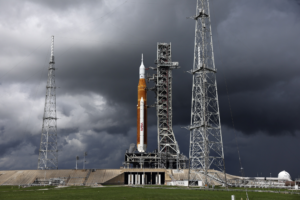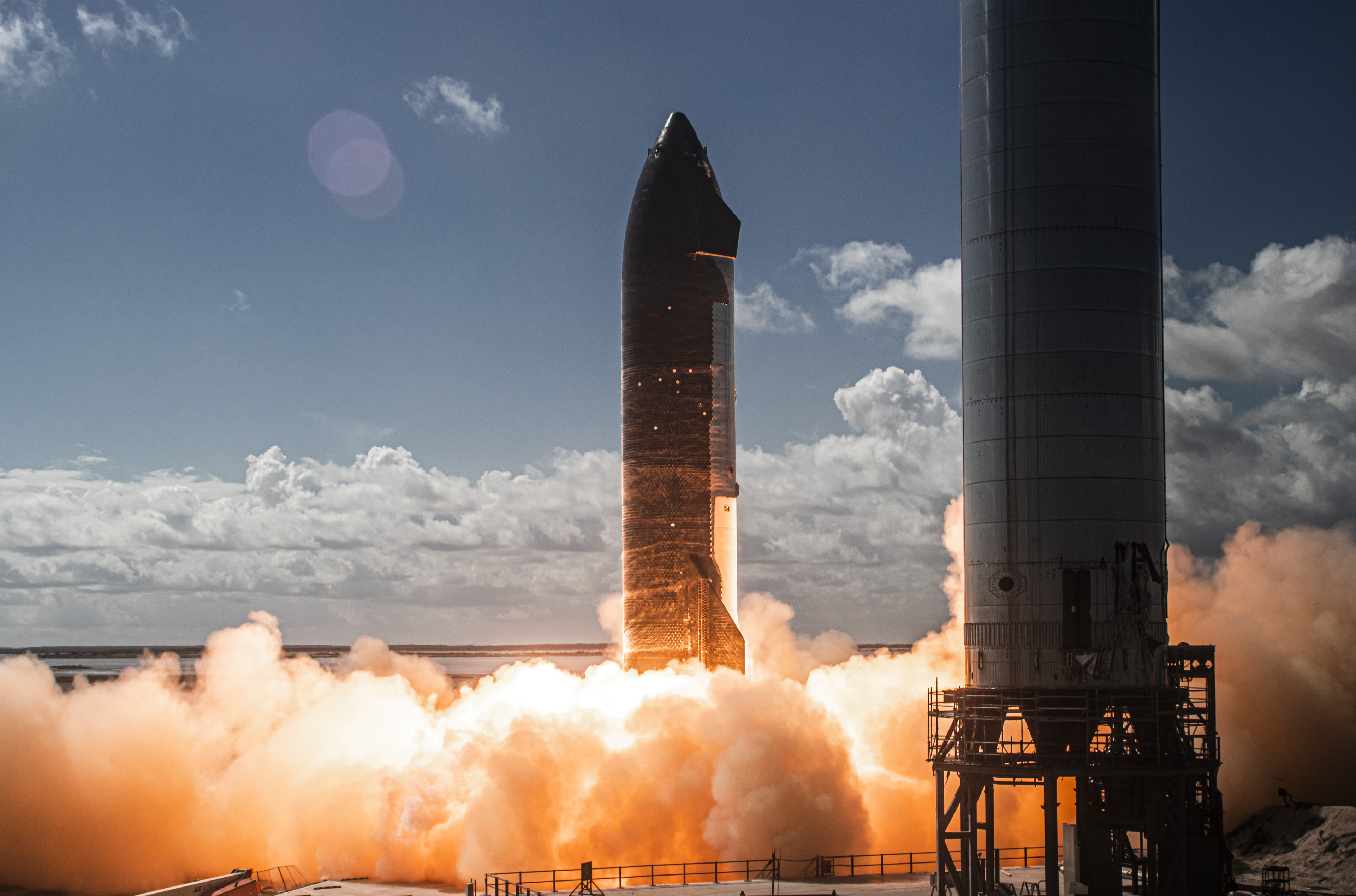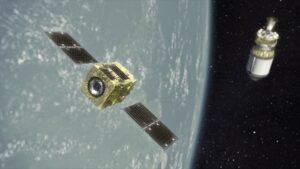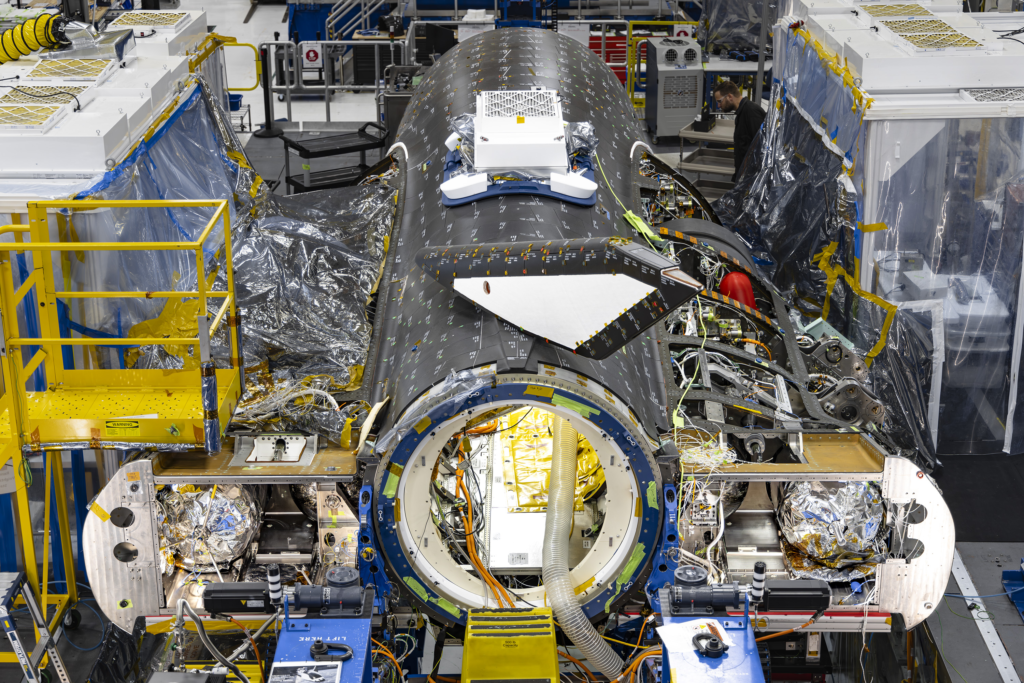
Dream Chaser Tenacity’s Heat Shield Is Just About Fully Installed
We are now only months away from the first flight of the Dream Chaser Spaceplane. In the last few years, we have watched the consistent development and assembly of Tenacity, the uncrewed test article. Recent updates from the company give a better idea of the vehicle’s progress and some of the work they have been doing throughout 2023.
This primarily includes heat shield installation. Somewhat similar to the Space Shuttle, Dream Chaser features thousands of individual tiles spread across the entirety of its body. Especially the first time, this process is time consuming and immensely important as a single error could mean the end of the vehicle during reentry.
On the bright side, Sierra Space has put a lot of work into trying to improve the system from what was used during the Shuttle era. However, new videos and pictures highlight how intricate this system is and the challenge the company has ahead of it. Here I will go more in-depth into Tenacity’s heat shield progress, the first launch, the improvements to this system, and more.
Heat Shield Progress
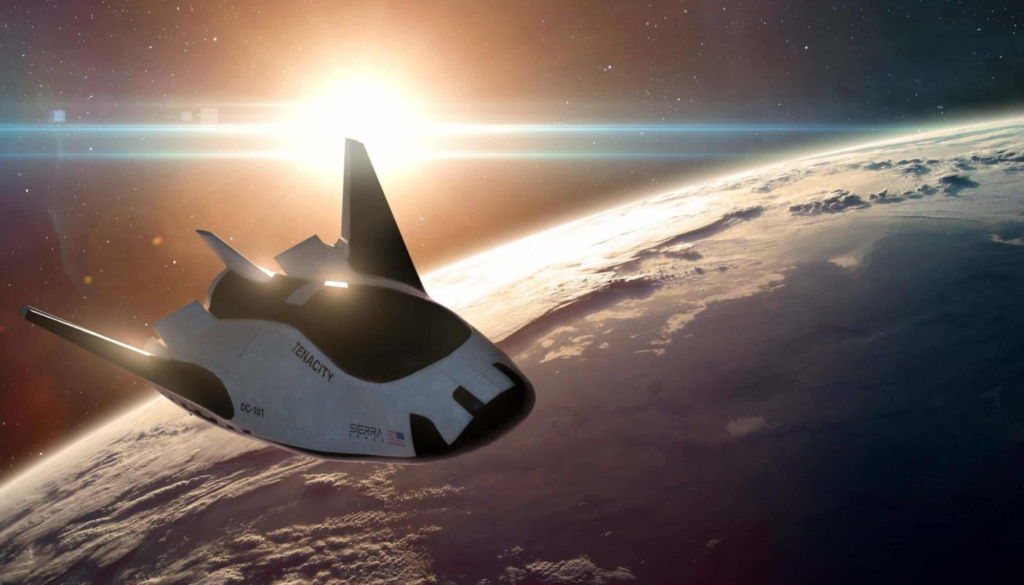
All the way back in October of last year, Sierra Space tweeted saying, “Right now, our Dream Chaser team is hard at work affixing more than two thousand hand-cut thermal tiles. We’ll have more photos and close-ups of Tenacity coming soon.” Even before this tweet earlier that year, the teams at Sierra Space had begun the long process of attaching each of the tiles. Between then and now, a few images were released showing Tenacity with more and more tiles.
Throughout this month new videos and pictures highlighted some of the progress made. For example, in one image you can see the complete heat shield application to the upper section of Tenacity. Even the rudder has tiles installed along its ridge. You can also notice that practically every tile on the top is black. Across Dream Chaser’s body, they use a mix of white and black tiles depending on the heat signature and expected temperatures. Specifically, both versions of the tiles are used to help balance the heat absorbed on-orbit and the heat that the spaceplane will need to survive on reentry. The areas in black will have the hottest temps on reentry while the white tiles are more reflective and will be cooler.
In a different video, it shows teams installing and testing the rudder. In the background, you can see the nearly complete test article including its heat shielding. Whats interesting is that this video is from January of this year meaning this was the company’s progress around 8 months ago. While it hasn’t been confirmed by the company, the heat shield should be fully installed by now. This is supported by the fact that before the launch of Tenacity, the teams need to complete quite a bit of testing with the finished test article.
A few months ago in June, Tom Vice, chief executive of Sierra Space was quoted saying “that vehicle is going through final integration and testing work at the company’s Colorado factory. It remains scheduled to ship later this summer to NASA’s Neil Armstrong Test Facility in Ohio, the former Plum Brook Station, for thermal vacuum testing. By now in September, the test article should already be undergoing testing if not on the way. This would confirm that the heat shield has been fully installed and the vehicle is ready.
For years now Sierra Space has been working to develop and create a new and improved heat shield capable of protecting the spacecraft upon re-entry. To be specific, around 2,000 of these tiles will protect Dream Chaser from temperatures that could reach upwards of 3,000°F on entry, while keeping the vehicle itself at only 350°F.
In relation to the Thermal Protection System (TPS), the corporate vice president of SNC’s Space Systems commented, “Safety of crew and cargo is most important to our team as we continue to mature the spacecraft design. For several years, we have worked collaboratively with Johnson and Ames, leveraging their existing infrastructure, materials, and expertise to mature and customize the TPS for our unique spacecraft. Our TPS is lighter, stronger, and more efficient than previous generations. We have met or exceeded all mission requirements” he said. Throughout the entirety of Dream Chaser’s development, a massive focus has been on the heat shield. With future goals of carrying crew and being rapidly reusable, this specific component needs to be perfect.
An Improved System

The Space Shuttle exposed quite a few flaws with its heat shield design over the course of its lifetime. In total, the Shuttle had around 24,000 individual thermal tiles across the entire spacecraft. Dream Chaser is about 1/4th the size of the Shuttle and has a lot fewer tiles altogether. In the past, NASA faced a significant structural design challenge in the creation of numerous unique tiles. It was necessary to design thousands of these tiles that had compound curves, interfaced with thermal barriers and hatches, and had penetrations for instrumentation and structural access. The overriding challenge was to ensure the strength integrity of the tiles had a probability of tile failure of no greater than 1/108. Not to mention, the amount of time necessary between missions to fix and replace specific individual tiles across the entire spacecraft.
Sierra Space highlights that their thermal tiles are both strong and lighter weight than what was used during the shuttle program. In order to keep the tiles on Dream Chaser, Sierra Space’s engineers are using room temperature vulcanizing (RTV) silicone. RTV silicone is able to withstand high temperatures, making it perfect for bonding the tiles. Each tile is tested by using a mechanism that pulls on them, which ensures the bond is sufficient.
The company also points out that SNC engineers have been able to update their TPS tiles from what was used during NASA’s shuttle program with more innovation, better technology, and utilizing lessons learned. They use more modern manufacturing techniques to increase strength and reduce cost. Another difference between the tiles is Dream Chaser tiles are about 10 inches by 10 inches, while those on the shuttle were six inches by six inches. All of which working to improve from the past Space Shuttle and its design.
Starting all the way back in 2015, Sierra Nevada Corporation (the parent company of Sierra Space) successfully completed several significant Thermal Protection System (TPS) material development tests for its Dream Chaser spacecraft. The TPS tests were completed at NASA’s Ames Research Center and Johnson Space Center under reimbursable Space Act Agreements (SAA). The tests provided critical data needed to support the TPS subsystem Critical Design Review (CDR) and to validate Dream Chaser TPS manufacturing readiness.
Taking a closer look at the tests themselves, over 100 arc jet cycles and radiant heat tests were completed at Johnson’s Radiant Heat Test Facility (RHTF) and Ames’ Aerodynamic Heating Facility (AHF). RHTF provided results supporting thermal characterization of the developmental TPS materials. The test data was then used for thermal modeling, analysis, and TPS sizing. The Ames AHF arc jet tests were performed as a second phase in the development testing to gauge the material performance in environments simulating Dream Chaser flight conditions. Valuable arc jet test results supported SNC’s certification of the manufacturing capability of a high-temperature material called Toughened Uni-Piece Fibrous Reinforced Oxidation-Resistant Composite TUFROC. TUFROC is mainly used on the high-temperature nose and wing leading edges of the Dream Chaser spacecraft.
Currently, the Dream Chaser Spaceplane is scheduled to lift off for the first time on top of a Vulcan Centaur in only a few months this December. While the mission will likely get pushed back a few months to early next year, the launch date is still approaching quickly. This mission is called SNC Demo 1, the planned first flight of the Sierra Nevada robotic resupply spacecraft Dream Chaser to the International Space Station (ISS) under the CRS-2 contract with NASA. The Commercial Resupply Services (CRS) are a series of flights awarded by NASA for the delivery of cargo and supplies to the International Space Station (ISS) on commercially operated spacecraft. The first CRS contracts were signed in 2008 and awarded $1.6 billion to SpaceX for twelve cargo Dragon and $1.9 billion to Orbital Sciences for eight Cygnus flights, covering deliveries to 2016. A second phase of contracts (known as CRS-2) was solicited in 2014. This time around, Sierra Nevada Corporation and the Dream Chaser Spaceplane were included in a minimum of seven missions.
These missions will utilize the uncrewed variant of Dream Chaser. With the help of the Shooting Star service module, Dream Chaser can deliver up to 5,500 kg of pressurized and unpressurized cargo to the space station, including food, water, supplies, and science experiments, then return to Earth. Dream Chaser can return critical cargo at less than 1.5 g’s using a gentle runway landing. Designed for high reusability, this vehicle is trying to reduce overall cost, providing quick turnarounds between missions. The ability to liftoff on top of multiple launch vehicles and land at a wide variety of runways makes Dream Chaser a flexible option for reliable transportation. After leaving the space station, the Dream Chaser Cargo System also offers disposal services via the Shooting Star transport vehicle. Once separated from Dream Chaser, Shooting Star burns up safely in Earth’s atmosphere.
Conclusion
Sierra Space should be finally complete with installing Dream Chaser Tenacity’s heat shield. By now the vehicle should already have started testing in preparation for a launch in the next few months. We will have to wait and see how it progresses and the impact it has on the space industry.

